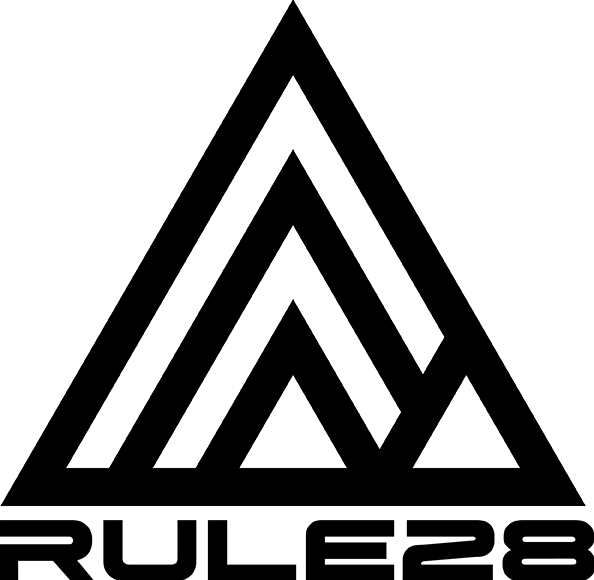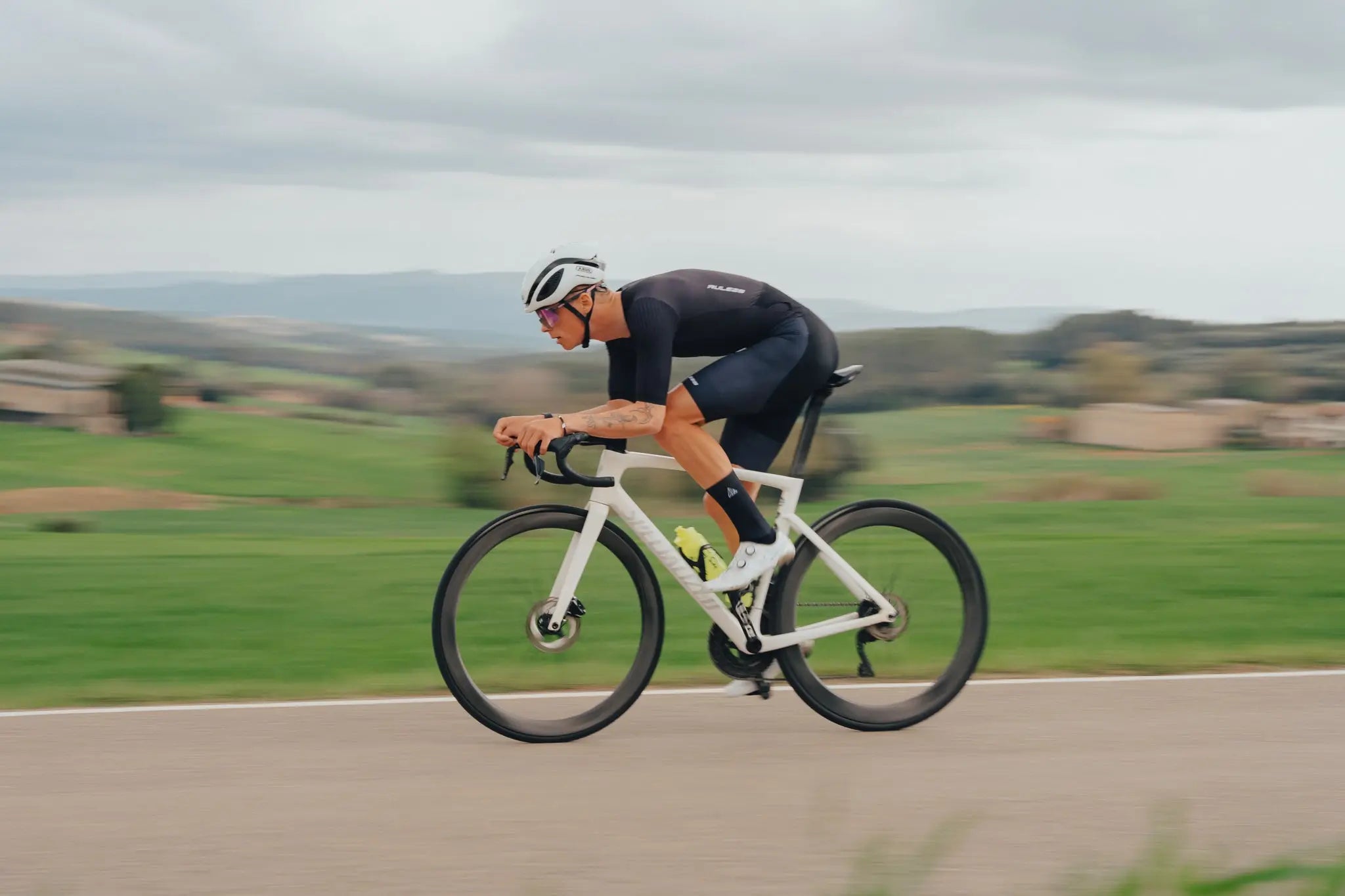Besides your power output, how aerodynamic you can make yourself the greatest factor in how fast you can become in cycling.
Getting your CdA (Coefficient of Drag x Frontal Area) as small as possible will allow you to ride faster for less effort. Wind tunnel testing is the gold standard for optimising aerodynamics, it’s highly accurate and allows minute changes to be studied, however it’s often inaccessible due to cost and location.
Thankfully, with modern tools and the innovative Chung Method, you can perform aero testing at home. By combining equipment most serious riders now own like power meters and speed sensors with free software such as Golden Cheetah, you can fine-tune your position and gear to ride faster and more efficiently.
This guide explains everything you need to know about at-home aero testing, from understanding the methods to setting up your tests and analysing the results.
Why Is Aero Testing Important?
-
At higher speeds, aerodynamic drag accounts for 80+% of the resistance you face. Reducing your drag coefficient (CdA) allows you to optimise your position and equipment like helmets, clothing and bike setups to find the most aerodynamic options. The result being that you can:
-
Ride faster: Achieve higher speeds with the same effort.
-
Save energy: Conserve energy for critical moments, such as sprints or climbs.
Rolling resistance, though smaller in effect, also matters—especially on rough surfaces. By understanding both aerodynamics and rolling resistance, you can make informed decisions to maximise your performance.
Getting Started with Aero Testing
Before diving into specific methods, follow these essential tips for accurate and reliable results:
- Choose the Right Route: Find a quiet, safe course with minimal traffic, smooth surfaces, and no unexpected obstacles.
- Start and Finish at the Same Point: This ensures the net elevation change is zero, making data analysis simpler.
- Pick Calm Conditions: Avoid windy days, as gusts can distort your results.
- Maintain a Steady Position: Hold the same posture throughout each test run.
- Maintain a steady speed: Braking and accelerating mid-run can interfere with your data, so aim to complete runs smoothly.
Step-by-Step Testing Protocols
The Chung Method
The Chung Method is ideal for closed loops and is considered the most accurate for aero testing.
What you'll need:
Power meter, a speed sensor (to record accurate speed and distance. GPS will not be accurate enough) and a bike computer that records altitude data altitude data.
Testing protocol:
- Choose your testing location:
- Find a stretch of road about 1-2km long
- Should be relatively flat or have a consistent grade
- Minimal traffic and crosswinds
- Smooth surface
- Straight or with gentle curves
- Prepare your equipment:
- Ensure power meter is calibrated
- Record temperature, air pressure, and general weather conditions
- Use the same equipment setup you want to test
- Testing procedure:
- Perform 2-3 laps in each position you want to test
- Maintain steady power output (Zone 2/3 is good to ensure you remain stable although testing at your race power outputs would also be a good idea to reflect how you ride in race conditions)
- Include both directions to account for wind effects
- Try to maintain consistent speed
- Avoid braking or sudden movements
- Leave at least 30 seconds between runs
- In Golden Cheetah:
- Import your ride data
- Go to the Aero section
- Select your test interval
- Input environmental conditions
- Set your weight and equipment weight
- The software will calculate your CdA
Virtual Elevation
The virtual elevation method, developed by Robert Chung, is the foundation of at-home aero testing. Here’s how it works:
By analysing power, speed, and elevation data, you can estimate your drag coefficient (CdA) and rolling resistance coefficient (Crr) in Golden Cheetah (GC). To get your true value for these, shift your estimated numbers in GC up or down until the virtual elevation metric matches the actual elevation recorded during your ride.
Tips for accurate results:
- Test in calm conditions. No wind and dry roads.
- Ensure correct power meter calibration prior to starting the test
- Do baseline runs in your normal position first
- Make only one change at a time between tests
- Repeat tests on different days to verify results
- More runs = better data quality
- Keep power output consistent between runs
- Maintain the same position throughout each run
The Shen Method
If you don’t have access to a loop, the Shen Method is a great alternative using an out-and-back course.
What You’ll Need:
Same as the Chung Method: power meter, speed sensor, bike computer that records altitude data altitude data.
Testing location requirements:
- Relatively flat road/circuit (less than 1% grade variation)
- Low traffic area
- Protected from crosswinds if possible
- At least 400m long
- Good road surface
Testing protocol:
- Set up your baseline position:
- Document your position with photos
- Record your weight and equipment setup
- Note weather conditions (temperature, pressure, humidity)
- Test procedure:
- Perform runs at 3-4 different power levels (e.g., Zone 2/3/4)
- Hold each power level steady for 1-2 minutes
- Include both directions on your course
- Maintain consistent cadence
- Do multiple runs at each power level
- In Golden Cheetah:
- Import your ride file
- Navigate to the Aero tab
- Select "Shen Analysis" as the method
- Choose your test intervals
- Input environmental conditions
- The software will calculate your CdA using regression analysis
Key differences from Chung method:
- The Shen Method focuses on steady-state power at different velocities
- It doesn't require as long a test section
- It's less sensitive to wind conditions if you do the out and back of the course.
- Uses statistical regression rather than virtual elevation
- Generally requires fewer total runs for valid results
Best practices:
- Test in calm conditions. No wind and dry roads.
- Ensure correct power meter calibration prior to starting the test
- Do baseline runs in your normal position first
- Make only one change at a time between tests
- Repeat tests on different days to verify results
- More runs = better data quality
- Keep power output consistent between runs
- Maintain the same position throughout each run
Coast-Down Testing
This is the easiest method if you don’t have a power meter.
The coast down method is a relatively simple approach to aerodynamic testing that involves measuring deceleration while coasting. Here's how to conduct it:
Prerequisites:
- GPS device or speed sensor (speed sensor strongly preferred for accuracy)
- Relatively flat or slightly downhill road
- Data recording capability (any bike computer or phone app that can record speed vs time)
- Still wind conditions
Testing protocol:
- Location selection:
- Find a straight section of road
- Minimal traffic
- Good surface quality
- Protected from cross winds
- Slight downhill grade is acceptable but must be consistent
- Long enough to coast from ~40 km/h to ~20 km/h
- Setup:
- Record weather conditions (temperature, pressure, humidity)
- Note your equipment setup and weight
- Document position with photos
- Calibrate your tire pressure
- Clean and lube chain to ensure consistent drivetrain friction
- Testing procedure:
- Accelerate to target speed (~40 km/h)
- Shift to a consistent gear (typically large chainring, middle of cassette)
- Coast without pedaling
- Keep position absolutely steady
- Record until speed drops to ~20 km/h
- Repeat 6-8 times in each direction
- Do both directions to account for grade/wind
- Data analysis:
- Plot velocity vs time
- Calculate deceleration rate
- Use the deceleration formula to determine CdA: CdA = (2m × a - mg × sin θ - Crr × mg × cos θ) / (ρ × v²) where: m = total mass a = deceleration g = gravity θ = road grade Crr = rolling resistance coefficient ρ = air density v = velocity
Tips for accuracy:
- Test in calm conditions. No wind and dry roads.
- Maintain absolutely consistent position
- Ensure bearings and drivetrain are clean and properly maintained
- Multiple runs help identify outliers
- Consider marking start/end points on the road
- Use same gear ratio for all tests
- Keep runs consistent in terms of position on the road
Key advantages:
- No power meter required
- Simple to execute
- Can be done with minimal equipment
- Good for comparing relative changes
Limitations:
- More sensitive to wind conditions than power-based methods
- Requires very consistent position control
- Road grade must be precisely known
- Rolling resistance must be estimated or measured separately
- Results can be affected by drivetrain friction
Single Climb Test
The single climb test (also known as the constant climb test) is a straightforward but effective method for measuring aerodynamic drag and isolates aerodynamic effects from rolling resistance. Here's how to execute it:
Prerequisites:
- Power meter
- GPS device for recording elevation
- A suitable climb (ideally 4-8% grade)
- Data recording device
Testing protocol:
- Climb selection:
- Find a steady climb with consistent grade (4-8% ideal)
- Minimal traffic
- Good road surface
- Protected from strong winds
- At least 1-2km in length
- No traffic lights or stops
- Setup:
- Record weather conditions (temperature, pressure, humidity)
- Document position and equipment
- Calibrate power meter
- Record total system weight (rider + bike + equipment)
- Note tire pressure
- Testing procedure:
- Warm up thoroughly
- Start each run from a consistent point
- Maintain steady power output (choose a power you can hold consistently)
- Keep same position throughout climb
- Ride at constant power for entire climb
- Repeat 2-3 times for each position tested
- Take adequate rest between efforts
- Data analysis:
- Calculate power balance equation: Power = Power against gravity + Power against drag + Power against rolling resistance
- Since grade is significant, aerodynamic power becomes more isolated
- Compare times/speeds at same power output between positions
- Speed differences at same power directly relate to drag differences
Advantages:
- Eliminates most variables affecting flat-land testing
- Less affected by wind due to lower speeds
- Rolling resistance has minimal impact due to low speeds
- Grade helps isolate aerodynamic effects
- Easier to maintain steady power output
- Less road length needed than flat testing
Limitations:
- Must be able to maintain consistent power
- Need accurate elevation data
- Wind can still affect results
- Temperature changes can affect power meter accuracy
- Requires relatively long recovery between efforts
Tips for best results:
- Test only in stable conditions. No wind and dry surface
- Ensure correct power meter calibration prior to starting the test
- Maintain extremely consistent position
- Use same line up the climb each time
- Allow full recovery between efforts
- Keep power as steady as possible
- Document everything (weather, position, equipment)
This method is particularly good for:
- Comparing different positions
- Testing equipment changes
- Initial aero testing without specialized equipment
- Verifying results from other testing methods
Analysing Your Results
To analyse your data:
- Upload to Software: Use a free tool like Golden Cheetah.
- Adjust CdA and Crr: Tweak these values until your virtual elevation matches your actual elevation.
- Compare Setups: Test different equipment or positions and note how changes affect your drag and rolling resistance.
If you want to be quick and dirty about it, A/B testing can be done even without golden Cheetah.
Edit your data so that the start and end points are consistent. Making or using a segment on Strava can be done for this if the route is long enough for where small changes can result in differences of over a second in finish time. Simply look a how fast one run was in comparison to another after making one change. Complete the segment faster across multiple runs? Congratulations you found some gains!
Conclusion
Aero testing doesn’t have to cost a fortune. By using the Chung Method or alternative protocols, you can gather precise data to optimise your performance.
Whether you’re refining your position, testing gear, or experimenting with tyre pressures, these methods give you actionable insights to ride faster and smarter.
For even greater gains, pair your optimised setup with our aero kit, designed to reduce drag and give you a competitive edge.






Share:
The Changing Face of the UK Cycling Race Scene
An Introduction To Cycling Aerodynamics
1 comment
Very nice write-up!
I vary speed and power during runs — Virtual Elevation and Golden Cheetah account for changes in speed, and if you “widen” the speed range over a run that’ll shorten the amount of time you need to test. Just don’t use the brakes. And the Shen Method uses a velodrome or other circuit where you slowly and monotonically increase the speed from slow to fast.
I use all of these approaches you mention, depending on the venues I have available.